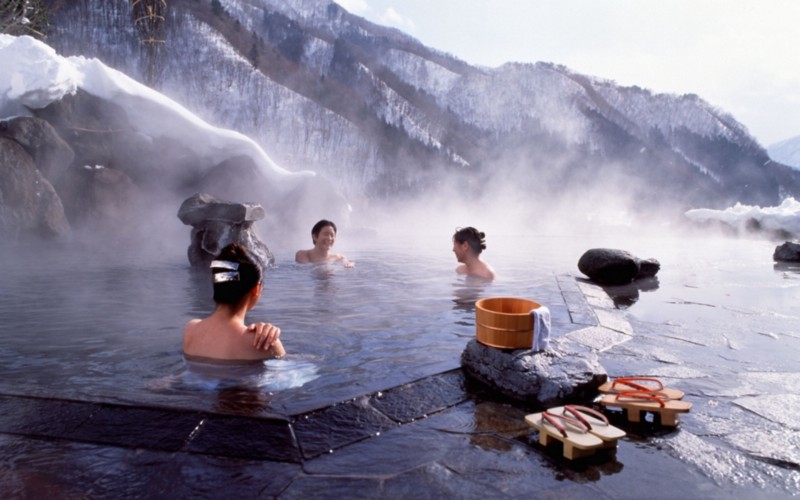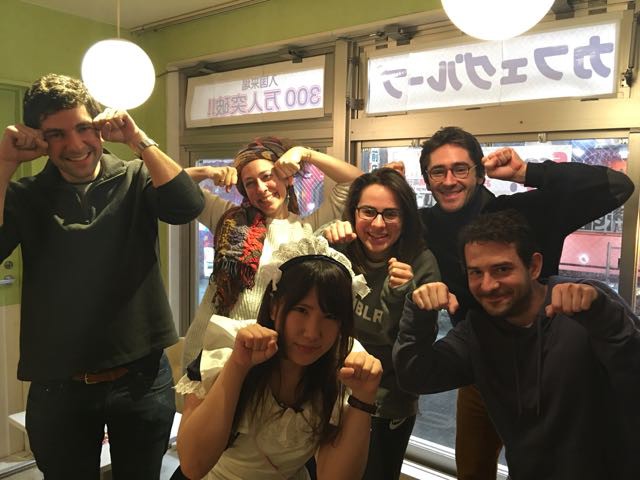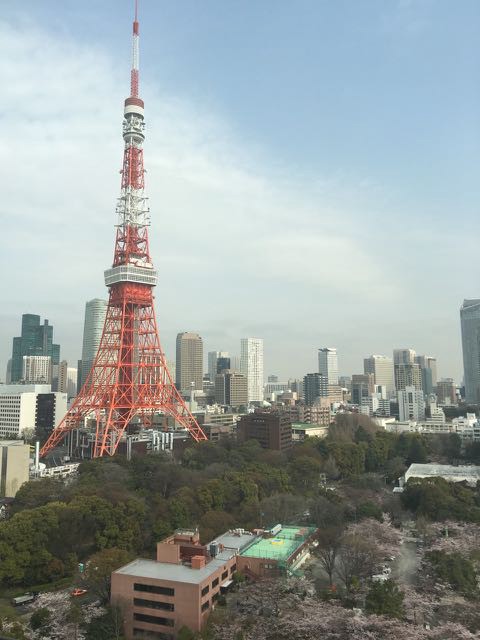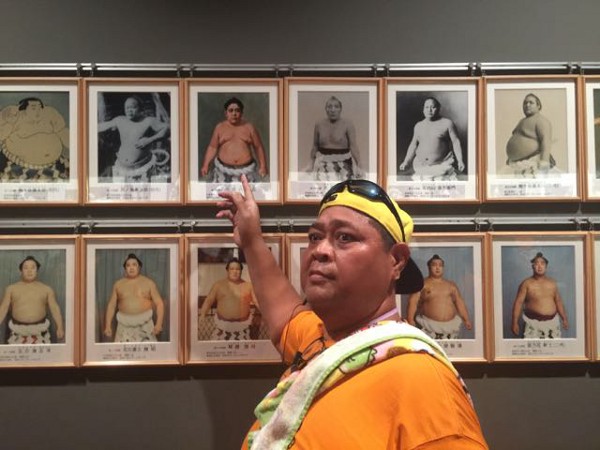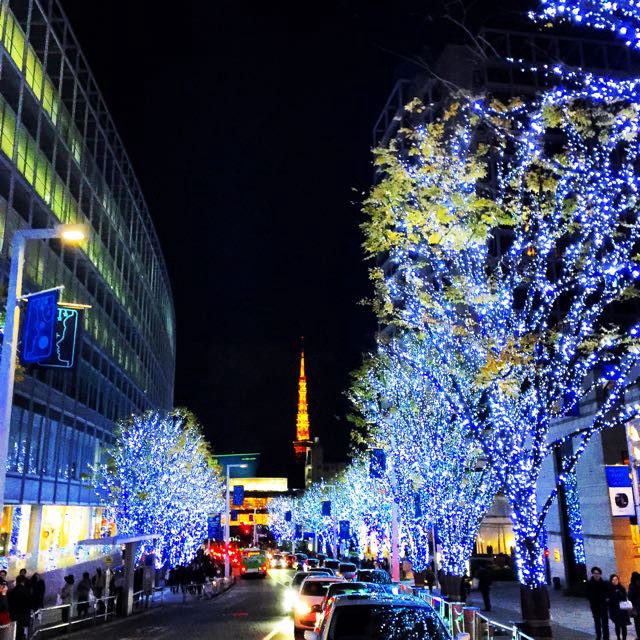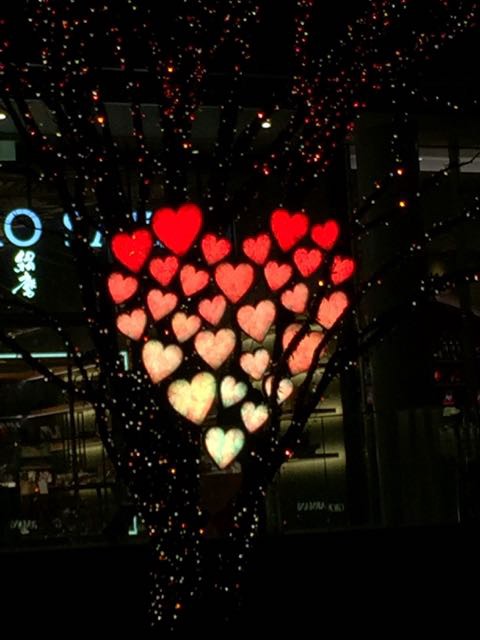Treatise On Ramen (Part 2): Traditional Japan, Cool & Weird Japan, Sports, Matsuris & National Holidays
I moved from New York to Tokyo for work in December 2014 with very limited Japanese. Many friends have asked me about my experiences and for advice on where to go, what to see, and of course, what to eat and drink. I should have just created a blog. Although I just recently moved to Hong Kong, these reflections give you a glimpse into my experience. Thanks for taking the time to read.
Traditional Japan
51. Sakura
Sakura is the name of the Japanese cherry tree and flower. Every March / April, experts try to forecast when the blooming of the Sakura will take place. The Japanese engage in the centuries-old tradition of “Hanami” and go on an excursion to see flowers. The tradition involves sitting under a Sakura with friends and family, deluging in traditional BBQ and alcohol. Check out the Imperial Palace, Ueno Park, and Yoyogi Park.
52. Yukatas
Very comfortable summer kimonos worn at outdoor summer events, hanabi (fireworks) displays, at ryokans (traditional Japanese inns), especially after bathing in onsens (hot springs / public baths.) Make sure the left side of the yukata is wrapped over the right side.
53. Taiko Drums
Big drums used in religious ceremonies or local festivals. You can get good training on virtual taiko drums at any of the arcades.
54. Ryokans
Ryokan are Japanese style inns found throughout the country. More than just a place to sleep, ryokans are an opportunity to experience traditional Japanese hospitality, incorporating elements such as tatami floors, futon beds, Japanese style baths and local cuisine.
55. Tea Ceremony (“Chado”)
Cultural ritual involving the preparation and consumption of Japanese green tea. The preparation is laborious and precise steps must be followed.
56. Japanese Hot Springs (“Onsens”)
Natural hot springs are numerous and highly popular across Japan. There are many types of hot springs, distinguished by the minerals dissolved in the water. Hot spring baths come in many varieties, indoors and outdoors, gender separated and mixed, developed and undeveloped.
57. Organized Religion
While most Japanese do not identify with organized religion, most participate in rituals and customs derived from several religious traditions including Shintoism / Buddhism / Confucianism. Life cycle events are often marked by visits to a local shrine.
58. Ikebana
Japanese art of flower arrangement. More than simply putting flowers in a container, Ikebana is a disciplined art form in which nature and humanity are brought together. Though Ikebana is a creative expression, it has certain rules governing its form.
59. Japanese Gardens
The miniaturized abstract landscapes are found throughout the country: next to shrines, palaces, and castles or in the dead-center of Tokyo. Follow the path around the garden to see carefully composed landscapes, skip over the perfectly positioned rocks, and find peace looking at nature’s finest.
60. Bushido (“The Way of The Warrior”)
Although samurai no longer exist, the influence of these great warriors still manifests itself deeply in Japanese culture. The basis of samurai conduct is “bushido”, which is a unique philosophy valuing Righteousness (“gi”), Courage (“yu”), Benevolence (“jin”), Respect (“rei”), Sincerity (“makoto”), Honor (“meiyo”), Loyalty (“chūgi”), Self-Control (“jisei”). There is no place for fear in the way of the warrior.
61. Kabuki
Traditional Japanese dramatic theater with singing and dancing. It involves actors (traditionally male) covered in elaborate make-up, performing exaggerated actions, wearing extravagant wigs and elaborately designed costumes. Check out the Kabukiza Theatre in Ginza which caters to both locals and foreigners.
62. Geishas
Women trained in the arts of music, dance and entertaining who attend to guests during special occasions. They spend many years learning to be the perfect hostess in a party of men. Men pay huge sums of money to have geishas attend to their every whim but they are not to be confused as prostitutes. A true geisha is successful because she projects a sense of unattainable perfection and entertains with singing, music, dance, story-telling, attentiveness and flirtation. She can speak about politics as easily as she can explain the rules of a drinking game.
63. The Emperor
The current Emperor of Japan is Akihito, the 125th emperor of his line. He is the ceremonial head of state of Japan’s constitutional monarchy, a symbol of the Japanese nation and the unity of its people. Historically, the Emperor is also the highest authority of the Shinto religion as he and his family are said to be direct descendants of the sun-goddess Amaterasu. The Imperial House of Japan is the oldest continuing hereditary monarchy in the world.
64. Shoe Etiquette
Traditionally, the Japanese took off their shoes when entering a residence as people would sleep, sit and eat on tatamis and footwear would spread dirt across their living area. Today people still take off their footwear to keep the inside of the building clean and as a sign of respect. Make sure your socks do not have any holes and match!
65. Traditional Weddings
Traditional Japanese weddings usually begin with a ceremony at a shrine with a Shinto priest performing the wedding ceremony. The couple is purified, drinks sake, and the groom reads the words of commitment. At the end of the ceremony, symbolic offerings are given to the Shinto gods. The bride and groom usually wear Japanese wedding kimonos. The bride wears a white wedding kimono with a white bulky headdress (in order to hide the bride’s “horns.”) The groom’s kimono is usually black and has his family’s symbol embroidered on it in white.
66. Lucky Charms
“Engimono” are lucky charms thought to bring good luck and are sold mainly at shops within shrine grounds. People buy them in the hope of having better fortune, harvests, or business. Popular Engimonos include Mt Fuji, the Maneki-neko, and the Daruma though each area of Japan has its own unique lucky charms that have been passed down for generations.
67. Japanese Chef Knives
With a proud tradition and ancient technique of the Samurai swordsmanship, Japan has been producing top-quality knives for centuries. Many high-quality Japanese knives originate from Sakai, the capital of samurai sword manufacturing. You can even get your name engraved!
68. Fuji-San (“Mt Fuji”)
Standing at 3,776 m (12,389 ft), Mt Fuji is the highest mountain peak in Japan. The nearly perfectly shaped volcano and snow-capped peak is a well-known symbol of Japan. It has been worshiped as a sacred mountain and frequently depicted in art and photographs. The mountain is open for climbing during the summer (recommend climbing to a mountain hut at the 7th station on the first day, spend a few hours sleeping before continuing to the summit early on the second day to catch the sunrise.) For the less adventurous, Mt. Fuji can be appreciated year-round on a clear day from Tokyo or on the Shinkansen train from Tokyo to Kyoto.
Cool & Weird Japan
69. Pets
Cats and dogs are as well loved as children, and may even serve as a substitute for those who choose to forgo child-rearing.
70. [Insert Animal] Cafe
Check out cat cafes, owl cafes, bunny cafes, penguin cafes, snake cafes for some animal petting, feeding, and chilling.
71. Street Fashion & Cosplay
It is not surprising that one of the most popular hobbies in Japan is dressing up. From Halloween to casual Saturdays in Harajuku, get ready to see people dress up as characters from manga, anime, and video games, or famous singers, superheroes, or movie monsters. These creative spirits spend thousands of dollars on expensive cosplay outfits.
72. Karaoke
Karaoke was invented by Japanese musician Daisuke Inoue. “Karaoke — kans” are everywhere and a common after-work event with Japanese colleagues. Dress up in costumes, get the all-you-can-drink special (“Nomihodai”) and sing your favorite AKB48 / Bieber songs with your friends. Great place to pregame before a big night. Recommend booking room 701 at the Karaoke in Shibuya (Karaoke room filmed in Lost in Translation).
73. Capsule Hotels
While Airbnb is borderline illegal in Japan, capsule hotels provide cheap and basic overnight accommodation for travelers in the form of sleeping pods. Capsule hotels comprise of individual blocks with just enough room to sleep. The capsules are the width of a single bed. A TV is built in to the roof and a control panel with clock radio, alarm, TV controls and light switch is built into the side with a small ledge for personal items. The capsules are stacked side by side in rows normally with one unit on top of the other.
74. Maid Cafe
Waitresses dressed in French maid costumes act as servants, and treat customers as masters (and mistresses) in a private home, rather than as café patrons. Weird experience. Can’t make this stuff up.
Meow Meow Maid Cafe in Akihabara
75. Hostess (or Host) Cafe
Young women dressed casually whose work involves sitting at tables with customers, talking to them, entertaining them, getting them drunk, and so forth. Opposite gender alternatives also exist, where men known as hosto chat with women and entertain them.
76. Arcades
Most arcades are several stories tall, each level usually organized by game type. In the basement, you have the photo booths — get glossy pictures taken with friends and pay for photos or stickers. On the first floor you have the crane games. The higher you go, the more serious the games get. By the time you reach the top floor, it’s just rows and rows of multi-button fighting videogames (think: Street Fighter meets Final Fantasy) played by glassy-eyed zombie teenagers. Check out Akihabara’s Super Potato retro games center for a ride down memory lane.
77. Manga & Anime
Manga publications make up 40% of total sales of books and magazines in Japan. Dragon Ball, Doraemon and Sailor Moon are known by most people all over the world.
78. AKB48
Japanese idol girl group named after Akihabara area in Tokyo, where the group’s theater is located, and its original roster of 48 members. The group is one of the highest-earning musical performers in Japan and found in all Karaoke joints.
79. Emojis \(^o^)/
Popular among current iPhone users, but where did Emojis come from? Originally meaning pictograph, the word “emoji” comes from Japanese (絵, “picture”) + moji (文字, “character”). DoKoMo i-mode, a mobile phone provider in Japan, was the first company to allow users to add pictures of commonly used emoticons to their text messages.
80. Tadashi Yanai
The founder of Fast Retailing (a Japanese retail company that owns Uniqlo, J Brand, Comptoire des Cotonniers, g.u., Princesse Tam Tam, and Theory) is according to Forbes the richest man in Japan with a net worth of $21.1 billion. Make sure you visit the 12-floor UNIQLO flagship store in Ginza.
UNIQLO Flagship
81. Women-Only Passenger Cars
Women-only cars were introduced to combat lewd conduct, particularly groping. Women-only policies vary: some are effective during rush hour, others throughout the day.
82. Iphone Camera Shutter Click
The disturbing side effect of the proliferation of the built-in-camera cellphone raised a problem of voyeurism and up-skirt photography — snap pictures while aiming up a woman’s skirt. All iPhones in Japan have a shutter click sound by law.
83. Collector Culture
We know everyone’s taken a hobby too far but the Japanese propensity for mass collecting items is a quirk amongst all nations.
84. The Beatles
The Beatles first performed in Tokyo in 1966. The tour became famous because of over-zealous security and public protests about the band playing at the traditional Budokan venue. Then there is Yoko Ono and the official John Lennon Museum in Tokyo. Of course The Beatles pop up everywhere: T-shirts, posters, in cafes, in chain stores called Strawberry Fields and Yellow Submarine. Nearly 49 years after The Beatles first came to Japan, Paul McCartney returned in March 2015 as a solo act on his Out There tour. I had the privilege of getting first row tickets at the 55,000-seat Tokyo Dome.
85. Star Wars
The Japanese influence on “Star Wars” is undeniable. It is rumored that George Lucas was inspired by Akira Kurosawa’s film “The Hidden Fortress” and the term jidai geki (historical drama) when coining the word “jedi.” With vintage figures and memorabilia sold in every store, a Japan exclusive trailer, and ANA’s (Japan’s largest airlines) unveiling of the first 787–9 Dreamliner Star Wars themed plane, the anticipation for “Star Wars: The Force Awakens” was high.
86. Face Masks
For first time visitors to Japan seeing people wearing face masks can be surprising. Are they germaphobes? Afraid of Ebola? Want to signal a lack of desire to communicate with others through the use of “social firewalls”? In reality, the main reason is that the Japanese want to protect themselves against pollen in the spring. The other reason is if people feel under the weather but can’t take the day off, common courtesy dictates wearing a face mark. The Japanese are considerate of others and want to help contain the spread of germs.
87. Pachinkos
Japanese equivalent of a slot machine. Pachinko parlors are widespread and operate like casinos but gambling for cash is illegal in Japan. Pachinko balls won from games are exchanged for prizes or tokens, which can be exchanged for cash at a place nominally separate from the parlor. These centers are usually packed with people, the noise of the falling balls is unbearable, and the music is blasting to encourage people to keep playing.
88. No Tipping Rule
Good service is expected and tipping is considered rude. Be prepared for patrons to chase you down the street to return extra coins.
89. Paris Syndrome
The French cultural influence on Japan is undeniable (Tokyo Tower was modeled after the Eiffel Tower.) Every year, a dozen Japanese tourists are repatriated from Paris, after falling prey to what’s become known as “Paris syndrome.” That is what some Japanese tourists suffer when they discover that Parisians can be rude or the city of lights does not meet their expectations.
90. Purikura Pictures
Purikura machines are extremely popular with Japanese girls and typically found in the basement of arcades. Ever wonder where those enhanced pictures of Japanese women with anime eyes come from? Step into the photo booth, take several group pictures, apply fake eyelashes, change eye and hair color, enlarge your eyes, make your legs look longer and slimmer, write or draw anything and make the photo stickers fun and original.
91. Kit Kats
Visiting new towns was always exciting due to the possibilities of tasting a new Kit-Kat. There are regional Kit-Kats, sorted by prefecture; then there are seasonal Kit-Kats, rotated nationally every season. Personal favorite: Green Tea Kit-Kats (available at duty free).
Sports
92. Sumo Wrestling
It was always a lifelong dream to go to a Sumo tournament in Japan and meet a Yokozuna. Three grand tournaments (held in January, May and September) are held at the Ryogoku Kokugikan, Tokyo’s National Sumo Hall. Bouts, scheduled throughout the day, usually last for just a few intense seconds (bodies lock, twist, ripple, drop) with a lot of posturing (stretching, stomping, salt-tossing) in between. I had the privilege of meeting Konishiki Yasokichi, the first non-Japanese-born wrestler to reach ōzeki, the second highest rank in the sport, and the fattest sumo of all time. He provided live commentary during the bouts and later brought me to a Sumo stable, where young wrestlers sleep, eat (a lot), and train.
93. Baseball Fever
Baseball is surprisingly the most popular spectator sport in the country. It is a thrill to go to watch the Yomiuri Giants in action at the Tokyo Dome City. Legions of fans support their team with sophisticated, coordinated cheers.
94. Rugby
Rugby is surprisingly one of the most popular sports in Japan. At the 2015 Rugby World Cup, the Japan National Team — the “Brave Blossoms” beat the South Africa team — the “Springboks” — 34–32, producing arguably the biggest upset in the history of professional rugby. Anticipation is high for the 2019 Rugby World Cup to be held in Japan, the first time in Asia.
95. Japanese Martial Arts
Martial arts trace their origin in the warrior traditions of the samurai and the caste system that restricted the use of weapons by members of society. Samurai were expected to achieve mastery in unarmed combat in addition to swordsmanship. Many different forms of martial arts have developed over the years including Aikido, Sumo, Jujutsu, Judo, Kendo, and Karate. Mastery of the sport encompasses physical, spiritual, and moral dimensions with a focus of self-improvement, fulfillment and personal growth. Expectations are high for the Japanese Olympic Martial Arts athletes who will compete at the 2020 Olympics to be held in Japan.
Matsuris & National Holidays
96. Halloween
The annual celebration is a cultural import from the West that has become a major seasonal event in Japan. The Japanese prepare elaborate costumes for parades nationwide. Check out Roppongi and Shibuya Crossings on Halloween for some seriously spooky costumes.
97. Christmas
Christmas eve is thought of as a romantic day, in which couples spend together and exchange presents. Young couples like to go for walks to look at the Christmas lights (recommend checking out Keyakizaka Dori and Midtown) or and have a romantic meal in a restaurant.
98. Valentine’s Day / White Day
On Valentine’s Day, women are supposed to give chocolate to men, both your lover and your male colleagues. After receiving Chocolates on Valentine’s Day, men are morally indebted to women. On White Day, men pay their dues and give women white chocolate.
99. New Year’s Day
While Japan does not celebrate New Years with fireworks, the Japanese have their own traditional customs. They eat dishes called “Osechi-ryori” and rice cakes (“mochi”), listen to bells ring at a local shrine or temple, and send postcards to friends / family. Years are traditionally viewed as completely separate, with each new year providing a fresh start. All duties are supposed to be completed by year-end and bonenkai parties (“year forgetting parties”) are held with the purpose of leaving the old year’s worries and troubles behind. The most popular temples and shrines, such as Tokyo’s Meiji Shrine, attract several million people.






